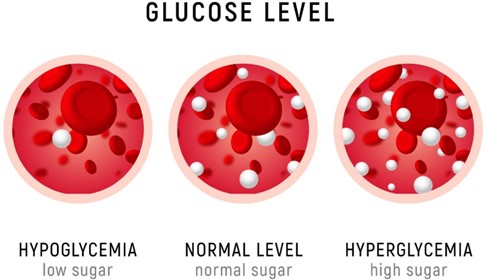Important nursing intervention(s) when caring for a patient with Cushing syndrome include:
observing for signs of hypotension.
monitoring blood glucose levels.
protecting patients from exposure to infection.
restricting protein intake.
Correct Answer : A,B,C
b. Monitoring blood glucose levels: This is an essential nursing intervention as patients with Cushing syndrome are at risk for developing diabetes mellitus because of cortisol on glucose metabolism. The nurse should monitor the patient's blood glucose levels regularly and report any abnormal readings to the healthcare provider.
c. Protecting patients from exposure to infection: Patients with Cushing syndrome are also at risk for developing infections due to the immunosuppressive effects of cortisol. The nurse should take appropriate infection control measures, such as frequent handwashing, wearing gloves, and isolation precautions if necessary.
a. Observing for signs of hypotension: Although hypotension is not typically seen in patients with Cushing syndrome, it can occur in some cases due to the depletion of cortisol. The nurse should monitor the patient's blood pressure regularly and report any abnormal readings to the healthcare provider.
Nursing Test Bank
Naxlex Comprehensive Predictor Exams
Related Questions
Correct Answer is B
Explanation
Since the patient's pre meal blood sugar is 311 mg/dL, according to the sliding scale, the patient requires 8 units of Humalog insulin. Therefore, the nurse should administer 8 units of Humalog insulin before the patient's meal. It is important to note that if the patient's blood glucose level is greater than 400 mg/dL, the nurse should call the MD instead of administering insulin. Keeping the patient NPO (nothing by mouth) is not necessary in this situation, as the patient is awake, alert, and able to swallow, and will require their meal for adequate nutrition. However, it is important to monitor the patient's blood glucose level after administering insulin and adjust the dosage if necessary.
Correct Answer is B
Explanation
The patient received 38 U of NPH insulin at 7:00 AM, and by 1:00 PM, the insulin has been active for approximately 6 hours. The patient has missed lunch, which may lead to hypoglycemia, especially with the activity of the insulin.
Sending a glass of orange juice will provide the patient with a quick source of glucose to prevent hypoglycemia. If testing is further delayed, the nurse may request that the patient be allowed to eat lunch first or save the lunch tray for later, but immediate intervention is necessary to prevent hypoglycemia. Discontinuing the evening dose of insulin is not an appropriate action and should not be considered without consulting the healthcare provider.

Whether you are a student looking to ace your exams or a practicing nurse seeking to enhance your expertise , our nursing education contents will empower you with the confidence and competence to make a difference in the lives of patients and become a respected leader in the healthcare field.
Visit Naxlex, invest in your future and unlock endless possibilities with our unparalleled nursing education contents today
Report Wrong Answer on the Current Question
Do you disagree with the answer? If yes, what is your expected answer? Explain.
Kindly be descriptive with the issue you are facing.
